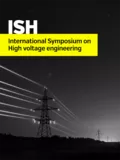Summary
The growing demand of electrical energy, the penetration of renewable energy resources and the required transmission capacity over long distances introduce new chal-lenges to the electrical power grid. Voltage-source converter (VSC) based HVDC transmis-sion technology with fault current controllability offers a promising solution to the future grid design, since it overcomes the drawbacks of HVAC transmission technology and provides crucial features to fulfil the new requirements. In case of overhead transmission, many faults are transient or temporary in nature and caused by lightning. These faults vanish independently after the line is disconnected from the system for a short interruption to allow the arc to extinguish, if the arc’s energy demand cannot be maintained. After the arc path has become sufficiently deionized, the line can be put in operation again. This auto-reclos-ing concept is used in HVAC systems since the beginning of the 20th century as well as for HVDC, whereas the interruption time for DC systems is often estimated conservatively based on experiments for HVAC. In case of HVAC, the recovery time can be determined adaptively by taking advantage of the induced voltage in the isolated phase due to coupling effects between the two energized phases and the isolated phase. Information about the final extinction of the non-linear arc can be extracted out of the measured voltage signal at the line ends. Due to slight coupling effects in HVDC systems, this method cannot be ap-plied for HVDC transmission. This paper describes a method to determine the time of final arc extinction with the help of VSC full-bridge modular multi-level converters (MMCs). One converter injects a low-level sinusoidal test current after fault clearance to imitate the cou-pling effects. The time of final arc extinction is estimated based on an evaluation of the voltage signal. The minimum required current amplitude for identifying the final arc extinc-tion is investigated using simulations in a sensitivity analysis taking into account a non-ideal current measurement. The simulations are carried out using EMTP (Electro-Magnetic Transients Program) software.
Additional informations
| Publication type | ISH Collection |
|---|---|
| Reference | ISH2017_471 |
| Publication year | |
| Publisher | ISH |
| File size | 838 KB |
| Pages number | 5 |
| Price for non member | Free |
| Price for member | Free |
Authors
P. TUNNERHOFF, R. PUFFER, A. SCHNETTLER
Keywords
HVDC, PSCAD, automatic reclosing, power system faults, fault detection



